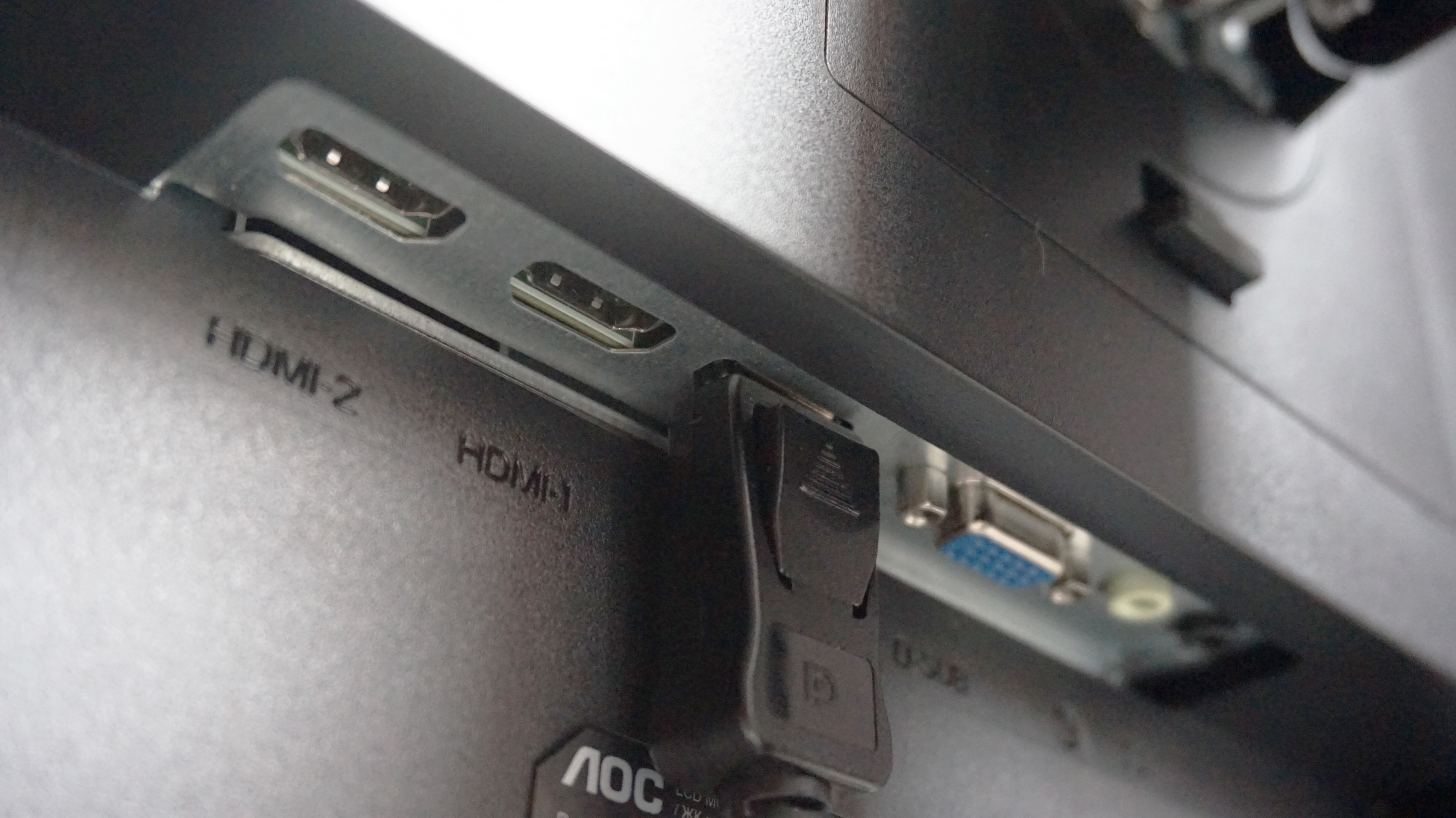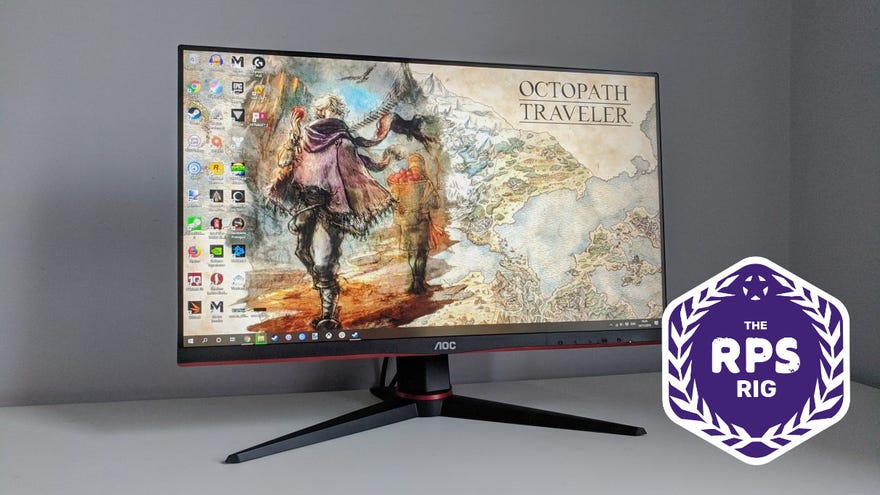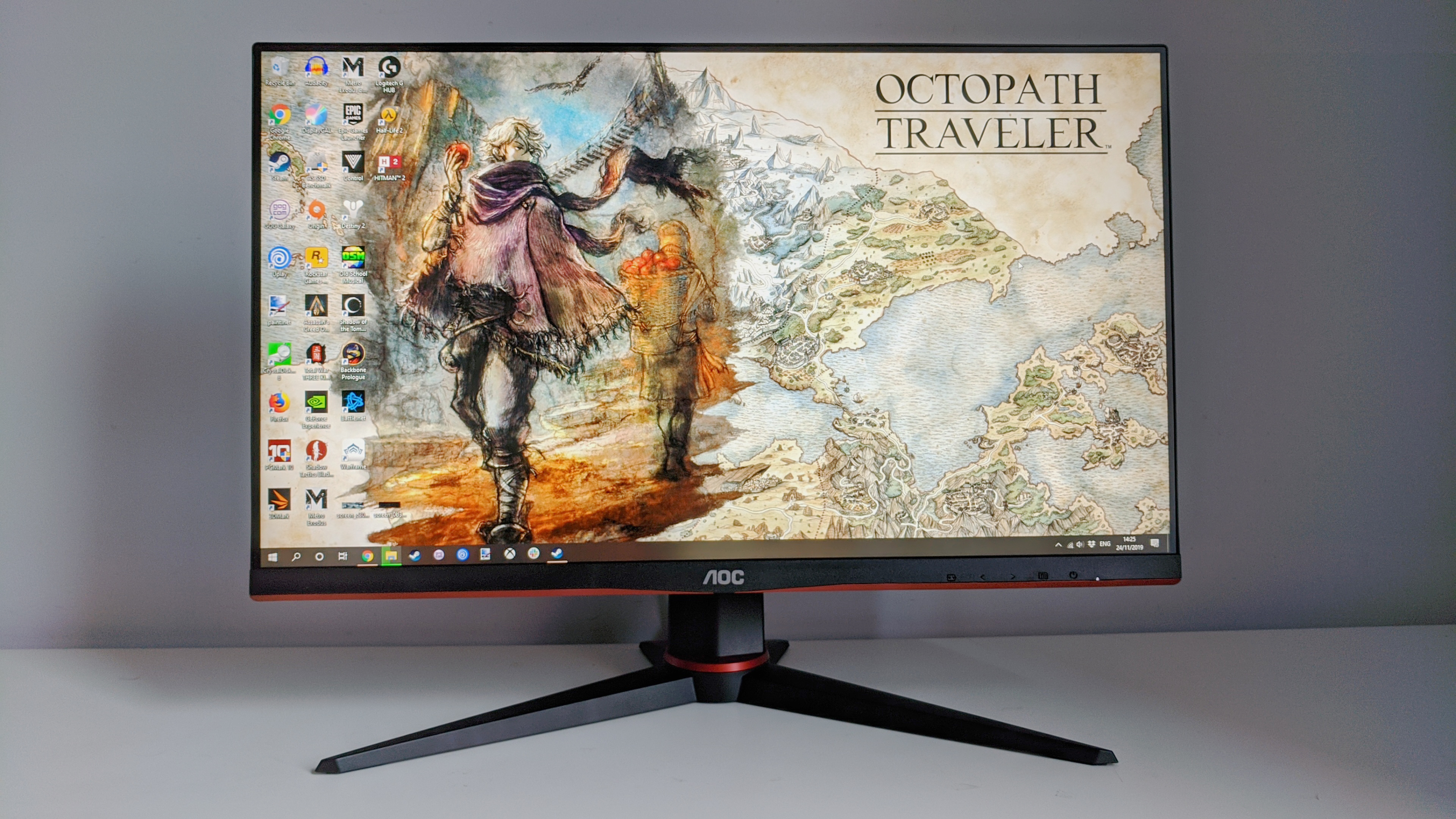AOC 24G2U review: another best budget gaming monitor champion
To me, to you
AOC's C24G1 is an excellent gaming monitor for those on a budget, but for those of you who prefer flat screens as opposed to curved ones, then the AOC 24G2U is definitely the monitor for you. This 24in, 1920x1080, 144Hz, AMD FreeSync screen shares many of the same specs as the C24G1, but comes with a flat, even more accurate IPS panel instead of a curved VA one. It's a fraction more expensive, going for £180 in the UK at time of writing compared to the C24G1's usual price of around £173 (for some reason it's strangely unavailable to buy anywhere in the US right now, but I'd imagine it will probably be more than the $145 asking price of the C24G1 if its UK pricing is anything to go by), but for the curve-averse, it really doesn't get much better than the 24G2U.
The best thing about the AOC 24G2U is that is doesn't require any additional menu settings fiddling to get the best from it. You can just use it straight out of the box on its default settings (Standard eco mode, Warm colour temperature) and get the best possible picture quality straight away. Indeed, when I tried tweaking its onboard menu settings to see if I could improve its colour accuracy, my X-Rite Display i1 Pro tool actually came back with worse results than what I'd measured on its out of the box settings.
Admittedly, an sRGB colour gamut coverage of 99.6% on said default settings was always going to be a tough act to beat, but when I switched over to the 24G2U's User colour temperature profile and adjusted its RGB values according to my testing software, my i1 Pro only came back with an sRGB coverage of 90.2%. As such, I'd recommend leaving the 24G2U well alone in the colour settings department, as its default setup is pretty much perfect already.
I was also impressed to see a really high DCI-P3 colour gamut coverage as well. This is the gamut that's generally used to measure HDR-grade displays, and a lot of the best HDR screens out there must display at least 90% of this particular gamut to earn their respective VESA DisplayHDR badges and the like. The 24G2U isn't an HDR gaming monitor, but the fact that it can display 87.2% of the DCI-P3 colour gamut out of the box is another testament to the quality of this particular panel. Heck, I've seen plenty of HDR gaming monitors that don't come anywhere near that kind of figure, so to see these kind of rich, vibrant colours on a non-HDR, sub-£200 display is rare.
The 24G2U does have an "HDR Effect" setting in its onboard menu, but this isn't true HDR. Indeed, games don't recognise it as an HDR monitor when HDR Effect is enabled, and all it really does it crank up the monitor's sharpness settings and saturation levels, resulting in an overly pixelated look that's much harsher on the eye. It also locks off the monitor's contrast, colour and eco mode settings, making it difficult to adjust in order to try and improve it. Instead, I'd recommend leaving it switched off, as I reckon the monitor does a pretty good job of delivering HDR-esque colours anyway without resorting to a special mode.

On top of its brilliant colour accuracy, I also recorded an excellent contrast ratio of 1490:1 on the 24G2U's default settings, which provided plenty of shadow detail in darker game scenes, as well as a highly respectable black level of 0.24cd/m2 (the closer to 0.00cd/m2, the better) on its maximum brightness setting. This resulted in lovely, inky blacks, and gave those aforementioned dark scenes a great sense of depth to them, even when the monitor was pelting out a peak brightness of 370cd/m2.
That brightness figure isn't as high as other some other gaming screens out there, but it's a lot more than what the AOC C24G1's VA panel can manage, which peaked at just 250cd/m2. Not that you'll need anywhere near that kind of brightness for everyday use, mind, as you'll likely give yourself a headache even if you've enabled its various blue light filter settings. Still, it's handy to have in case you happen to catch a ray of sunshine through your window, for example, and need that extra bit of visibility to see what you're doing. For gaming and daily desktop tasks, I tended to have the brightness set much lower, but colours still looked rich and vibrant regardless.

The 24G2U also goes one step further than the C24G1 when it comes to ports and inputs, too. You still get the same number of HDMI and DisplayPort connections as the C24G1, but the 24G2U has the all important addition of a 4-port USB3 hub, allowing you to hook up all your other peripherals such as your mouse, keyboard and USB headset as well as charge your phone. For me, that alone makes it worth the teensy bit of extra expense over the C24G1, which doesn't come with any USB ports whatsoever.
As for its chops as a gaming screen, the 24G2U's IPS panel was able to keep pace with every game I threw at it during my testing, and I didn't see any kind of smearing or blurriness that can sometimes occur on IPS panels that don't have very quick response times. Plus, while the 24G2U isn't currently one of Nvidia's officially sanctioned G-Sync Compatible monitors just yet, I was able to use its variable refresh rate AMD FreeSync tech perfectly fine when connected to an Nvidia graphics card.

I didn't see any signs of blinking, pulsing or other strange brightness defects that can sometimes occur on FreeSync screens that fail Nvidia's G-Sync Compatible test, and I didn't see any evidence of screen tearing going on when I was playing fast-paced games such as Doom and Warframe at high frame rates, either.
As such, Nvidia graphics card owners should be able to get just as much out of the 24G2U as those with AMD cards - although I should note its FreeSync support will only kick in if the frame rate is above 48fps on this particular screen (the same as the C24G1), so you may still see some screen tearing if games are running below that. This is the case with all G-Sync Compatible monitors, though (all of which function within their original FreeSync ranges), so if you want to be sure of getting that smooth, tear-free gaming experience regardless of how fast your game's running, then you'll need to shell out for a more expensive full-fat G-Sync screen.
Still, for those who'd rather not pay almost double the money on a proper G-Sync monitor like the 180Hz Acer Predator XB241H or Dell's 240Hz Alienware AW2518H, then the AOC 24G2U is by far and away the next best option. Its image quality is head and shoulders above other budget monitors I've tested in the 24in 1920x1080 category, and it gets an extra thumbs up because you don't have to spend ages faffing around in the settings menu to get it just right, either. Likewise, the combination of its high refresh rate, height-adjustable stand and plentiful supply of ports give it loads of flexibility, and the addition of a USB hub gives it the one thing the curved C24G1 was really lacking - all without breaking the £200 barrier as well.
The AOC C24G1 is still a great budget gaming monitor in its own right - especially if you want that elegant curve - but in terms of overall value for money, the 24G2U gives you more functionality and a better, more accurate panel for virtually the same amount of money. The C24G1 had a good innings on my best gaming monitor list, but now the best budget FreeSync spot belongs to its flat, 24G2U sibling.












